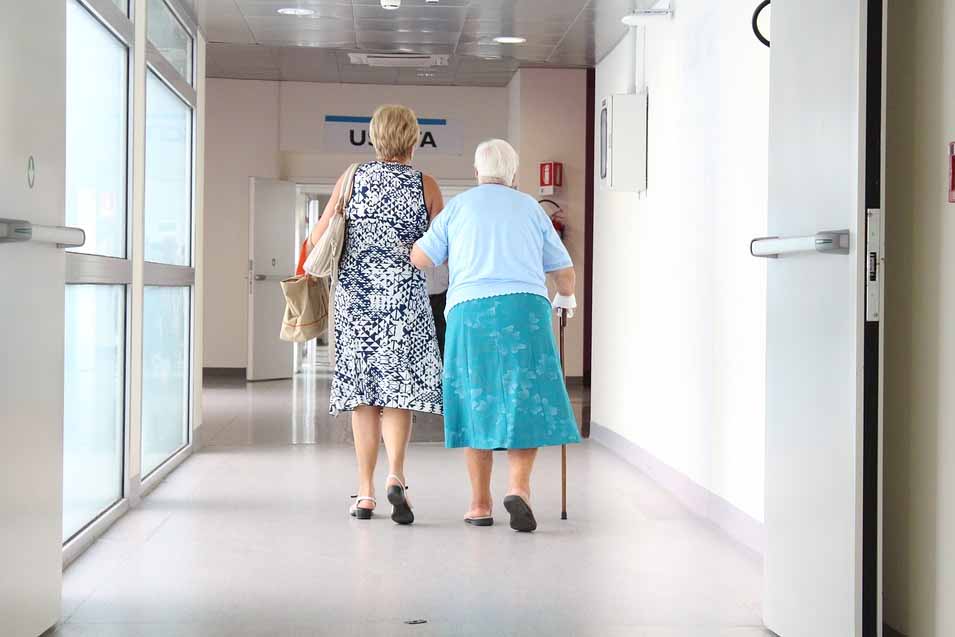
Did you know that birthweight can affect your risk of developing osteoporosis? Thanks to the work of the late epidemiologist Dr. David Barker, we know that low-birthweight babies are predisposed to having weak bones. The skeleton begins to develop at about 5 weeks of gestation and factors like poor nutrition and whether the mother smoked or had certain medical conditions reprogram how it develops, raising the risk of having low bone mass as an adult.
Moreover, if low-birthweight babies fail to thrive as Infants (often due to poor nutrition), their levels of growth hormone and cortisol are likely to be out of whack. These deviations further undermine bone building, setting the stage for rapid bone loss later in life.
If you are a woman of childbearing age, eating a nutritious diet is the best strategy for reducing your baby’s future osteoporosis risk. Good maternal nutrition (in general terms a diet abundant in healthy whole foods and low in nutrient-deficient processed food) has been shown to support the development of strong bones in offspring. Making sure your infant consumes adequate amounts of nutritious food (breast milk is best in the early months) will also encourage healthy bone building.
Osteoporosis is a Disease of Aging
However, you don’t need to be a high-risk baby to be vulnerable to osteoporosis; declining bone mass is linked with growing older. When you’re young, your body tends to create new bone faster than it breaks bone down. Around the age of 30 bone mass stabilizes then begins to decline, a process that ramps up after you turn 50.
Sadly, women are more vulnerable to developing osteoporosis than men. Our bone mass never matches that of our male peers and we’re set up to lose more thanks to menopause. At that point levels of hormones like estrogen, which help to maintain strong bones, precipitously decline. According to the Centers for Disease Control and Prevention, almost 25% of American women 65 years or age and over suffer from osteoporosis.
I came of age believing that you can’t rebuild lost bone without the help of medications, which may have alarming side effects. So, I was excited to learn that this accepted wisdom is being overturned. Studies are showing that certain nutrients, in combination with regular weight-bearing exercise, can do more than support strong bones. This nutrient-based approach has been shown to build new bone.
Rebuilding Bone with Nutrients
In 2012 the Combination of Micronutrients for Bone (COMB) found that after 12 months of supplementing with vitamin D(3), vitamin K(2), strontium, magnesium and docosahexaenoic acid (DHA; found in fish oil), patients, some of whom had been diagnosed with osteoporosis, increased their bone density in hip, spine and femoral neck sites at rates comparable to successful drug therapy. Interestingly, this study did not include supplemental calcium, a key bone-building nutrient.
It Takes More Than Calcium
Although most people do not get adequate calcium from their diets, ramping up supplemental calcium is not the answer. Without the help of other nutrients, calcium may be diverted to places other than your bones. In your arteries it can lead to plaque, in your kidneys it can produce kidney stones, and when it builds up in your joints, it’s painful, often severely so.
It takes a village of nutrients to deliver calcium to your bones — in addition to those noted in the COMB study, boron, zinc and certain B vitamins are often mentioned.
A number of companies have risen to the challenge and are producing cocktails of nutrients that work together to rebuild bone. These products vary and they can be researched on the internet.
Lifestyle Modifications Are Helpful
Over the long term, a nutritious diet of whole foods is the best strategy for building and maintaining strong bones. Leafy greens, which provide calcium in concert with other bone-friendly nutrients, such as vitamin K and magnesium, merit a shout-out.
On the other hand, certain lifestyle patterns, like smoking, over-imbibing in alcohol and eating too much processed food, have been associated with lower bone density. For instance, soft drinks are high in phosphates, which draws calcium from your bones. And soda has been linked with inflammation, which has been associated with osteoporosis and fracture risk. It’s worth noting that a diet high in animal-based protein (meat) has also been shown to promote inflammation and to rob your bones of calcium.
Certain medications can also affect your body’s ability to absorb calcium. Those medications worth mentioning include common antacids and acid blockers. Oral contraceptives burn up B vitamins that support the process of methylation, influencing bone density.
And last but certainly not least, sedentary behavior is linked with decreasing bone mass. People who are physically fit have been shown to have higher bone mineral density and even those who are older can gain modest amounts of bone mass with regular exercise.
Judith Finlayson is the author of You Are What Your Grandparents Ate: What You Need to Know About Nutrition, Experience, Epigenetics, and the Origins of Chronic Disease. Visit her at www.judithfinlayson.com.
Selected Resources
Moinuddin, M. M., et al. Cigarette Smoking, Birthweight and Osteoporosis in Adulthood: Results from the Hertfordshire Cohort Study. Open Rheumatol J 2008
Cole, Z. et al. Maternal Dietary Patterns During Pregnancy and Childhood Bone Mass: A Longitudinal Study. Journal of Bone and Mineral Research 2009.
Genuis, S., Bouchard, T. Combination of Micronutrients for Bone (COMB) Study: bone density after micronutrient intervention. J Environ Public Health 2012.
Boulier, A. et al. Combination of micellar casein with calcium and vitamins D2 and K2 improves bone status of ovariectomized mice. Osteoporosis Int. 2016
Kanellakis, S. Changes in paramters of bone metabolism in postmenopausal women following a 12-month intervention period using dairy products enriched with calcium, vitamin D and phylloquinone (vitamin K1 or menaquinon07 (vitamin K (2) ): the Postmenopausal Health Study II. Calcified Tissue International 2012.
Suominen, H. Muscle Training for Bone Strength. Aging Clinical and Experimental Research 2013.






































